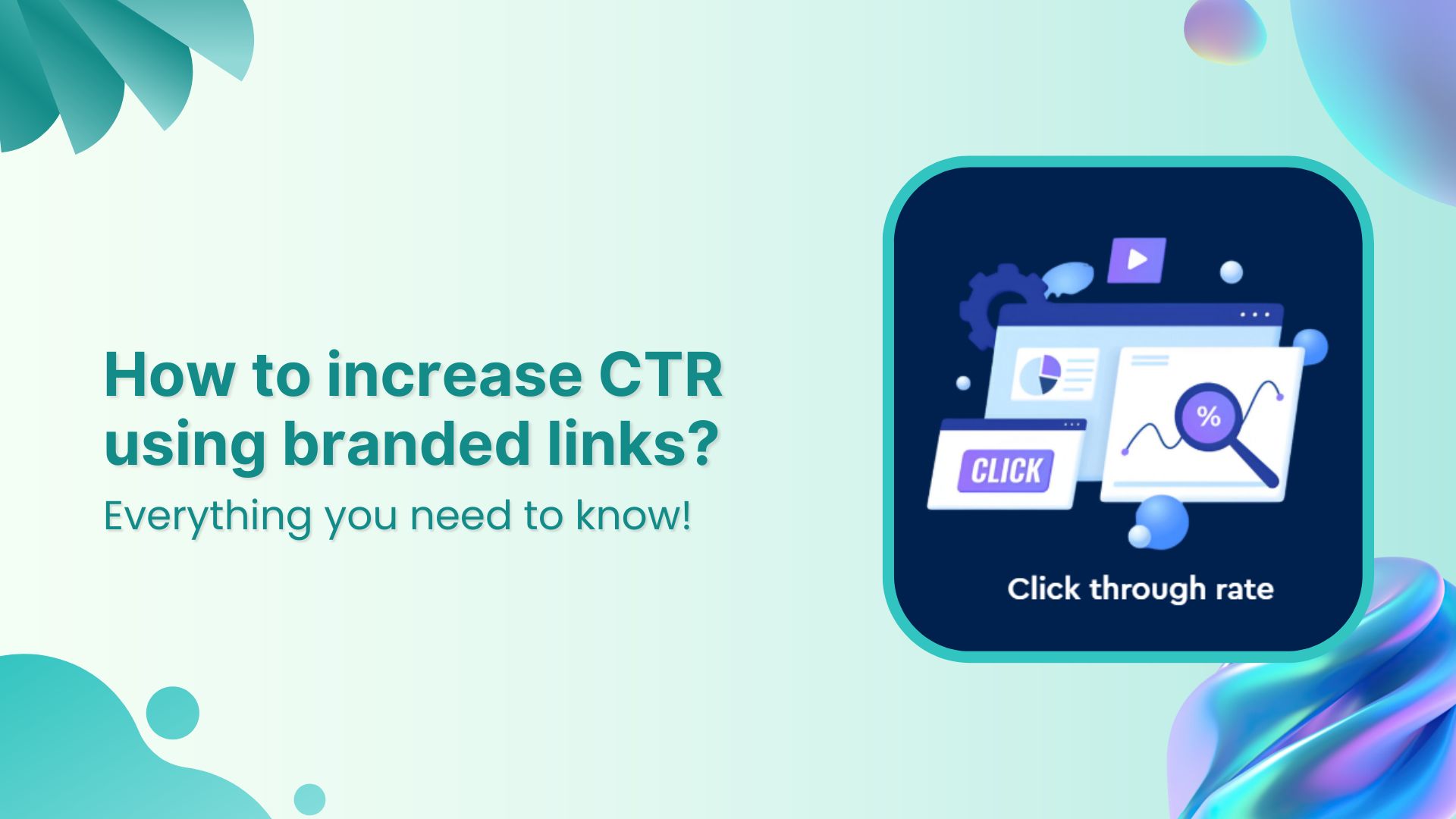Cracking the code of digital marketing involves understanding how people interact with your campaigns and which strategies are effective. In this journey, UTM parameters are like secret keys that help marketers unlock valuable insights.
Learning about UTM parameters is vital for making your online efforts count. This guide is here to walk you through the basics of UTM parameters, explaining why they matter, how they work, and how to use them in real life. In the end, you’ll know how to use UTM parameters to make better decisions and maximize your online marketing efforts.
What are the 5 UTM parameters?
The five UTM parameters are:
- Source: The website or medium that referred the traffic.
- Medium: The type of traffic, such as email, social media, or paid advertising.
- Campaign: The specific campaign that generated the traffic.
- Term: The keyword or phrase that was used to generate the traffic.
- Content: The specific piece of content that was clicked on.
UTM parameters can be used to track the effectiveness of marketing campaigns, to see which sources of traffic are driving the most conversions, and to understand how users are finding your website.
To use UTM parameters, you will need to use a UTM link builder. There are many free UTM link builders available online.
In order to create a UTM parameters link with the UTM builder, you will need to enter the following information:
- The URL of the page you want to track
- The source of the traffic
- The medium of the traffic
- The campaign name
- The keyword or phrase
- The piece of content
Also read: How to Create a Short URL: Step-by-Step Guide
UTM parameters examples:
Here are a few examples of how UTM parameters can be used:
Social Media Campaigns:
Let’s say you’re running a promotional campaign on Facebook to showcase your new product line. To track the effectiveness of this campaign, you can add UTM parameters to the links you share. For instance:
- utm_source=facebook
- utm_medium=social
- utm_campaign=new_product_launch
Email Newsletter Campaign:
If you’re sending out an email newsletter to your subscribers, you can use UTM parameters to differentiate clicks from the newsletter. For example:
- utm_source=newsletter
- utm_medium=email
- utm_campaign=summer_sale
Google Ads:
Suppose you’re running Google Ads for a specific keyword to drive traffic to your landing page. UTM parameters can help you identify the performance of this ad. For instance:
- utm_source=google_ads
- utm_medium=cpc
- utm_campaign=keyword_campaign
Affiliate Marketing:
If you’re collaborating with affiliates to promote your products, UTM parameters can help you attribute sales to their efforts. For example:
- utm_source=affiliate_partner
- utm_medium=referral
- utm_campaign=product_promotion
Guest Blog Posts:
If you’re contributing a guest post to another website and want to track the traffic it brings, UTM parameters can provide insights. For instance:
- utm_source=external_site
- utm_medium=referral
- utm_campaign=guest_post
QR Code Campaign:
Imagine you’ve placed QR codes on your product packaging for a special offer. By using UTM parameters, you can measure the response to this campaign. For example:
- utm_source=qr_code
- utm_medium=offline
- utm_campaign=special_offer
By incorporating UTM parameters with unique values like these, you can gain granular insights into the performance of your various marketing efforts across different sources, mediums, and campaigns. This information allows you to make data-driven decisions and optimize your strategies accordingly.
How to create UTM parameters?
Creating UTM parameters involves adding specific tags to your URLs, which helps track the source, medium, campaign, and other relevant information of your traffic. Here’s a step-by-step guide on how to create UTM parameters:
- Determine Your Tracking Goals:
Before you start, decide what information you want to track. Common UTM parameters include utm_source, utm_medium, utm_campaign, utm_content, and utm_term.
- Generate Your UTM Tags:
You can create UTM tags using a UTM parameter generator tool, such as Google’s Campaign URL Builder or Replug. These tools will guide you through the process and generate a tagged URL.
- Fill in the Parameters:
In the UTM parameter generator tool, you’ll typically find fields for each parameter:
utm_source: The source of the traffic (e.g., Facebook, newsletter, Google ads).
utm_medium: The marketing medium (e.g., social, email, cpc).
utm_campaign: The specific campaign or promotion (e.g., summer_sale, product_launch).
utm_content: Optional parameter for differentiating similar content (e.g., button_link, text_link).
utm_term: Optional parameter for identifying keywords in paid search campaigns.
- Generate Tagged URL:
After filling in the parameters, the UTM parameter generator will create a tagged URL with the UTM parameters appended to it. This URL is what you’ll use in your marketing materials.
- Use Tagged URLs in Your Campaigns:
Incorporate the generated tagged URL in your social media posts, emails, ads, or any other marketing materials you’re using. When users click on these links, the UTM parameters will be sent to your analytics platform, allowing you to track their journey.
- Analyze Results:
Monitor the performance of your campaigns in your analytics platform (e.g., Google Analytics). You’ll be able to see data categorized by the UTM parameters you’ve set up, helping you assess which sources, mediums, and campaigns are driving the most engagement and conversions.
Also read: Track Your Success: How to Create a Tracking Link?
Branded Short Links
Create and track branded short links for your business for better conversions.
Brand Your Links Now!
How to create a UTM campaign using Replug?
Follow these steps to add UTM code to your URL:
Step 1: Sign in to Replug or create an account for free.
Step 2: From the main dashboard, choose your campaign name or create one in just a few seconds.
Step 3: Enter the URL in the “URL to shorten” section below “Select your campaign.”
Step 4: Select the “add UTM” tag at the right side of the “URL to shorten” section.
Step 5: To add a saved UTM parameter, click “Select from saved UTM parameter.” To create a new UTM parameter, click “Create a new UTM parameter.”
Step 6: Fill in the UTM parameters when creating a new UTM parameter, then click Apply.
Step 7: Hit the “Create” button to generate a shortened version of your URL, along with UTM parameters.
Step 8: Click the edit icon to customize your UTM parameters URL.
Step 9: Copy the URL and click the update button, and you’re done.
Note: To access your newly created URL, click “Manage’’ then “Replug links” on the main dashboard page.
Also read: How to Create a Smart URL Link: Step-by-Step Guide
UTM Parameters: Why are they important?
For social media managers, demonstrating the concrete impact of their efforts can often be a daunting task. However, enter UTM parameters – the tools that can make this challenge a lot more manageable. Let’s dive into five compelling reasons why UTM parameters are absolute game-changers:
- Precise Credit Attribution
UTM parameters come to the rescue by helping you accurately attribute the sources of your website traffic. This knowledge is a goldmine for identifying which platforms or channels are driving the initial growth of your business. Imagine being able to compare the influx of visitors from social media ads, Google ads, email newsletters, and social media posts.
- Gauging Campaign Performance
Say hello to measuring the effectiveness of your marketing campaigns across multiple channels, including social media. With UTM parameters in hand, analytics become your best friend. You can delve into metrics like total goal conversions, bounce rates, and average time spent on your site for each campaign. This insight is like a compass guiding you through the performance jungle across various platforms.
- Unveiling ROI Insights
Tracking traffic and conversions on a channel-by-channel basis gives you the magical ability to calculate the Return on Investment (ROI) for your social media endeavors. By sorting data according to ‘utm_medium,’ you can quantify the value derived from both organic and paid social conversions. Similarly, sorting by ‘utm_source’ unveils the platforms that are channeling the most traffic. Blend both aspects, and you’re painting a vivid picture of your social media’s reach and impact.
- Personalized Audience Insights
UTM parameters offer a gift: the capability to segment your website visitors based on where they’re coming from. This segmentation is like having a magnifying glass on the preferences of each traffic source. You can then curate your content to resonate with the audience of each specific platform – talk about personalized engagement!
- Empowered Decision-Making
UTM parameters arm you with data that’s not just precise but also objective. This arsenal of information assists in making informed decisions that can reshape your social media strategy. It’s your go-to resource for identifying campaigns that need tweaking, optimizing your ad budget distribution, and crafting content that truly resonates with the platforms driving valuable traffic.
Create compelling Call-to-Actions to boost conversions
Improve your click through rate by creating catchy CTAs for your marketing campaigns.
Get Started For Free!
FAQs
Do UTM parameters affect SEO or website ranking?
UTM parameters themselves don’t directly affect SEO or ranking. However, if they generate duplicate content (e.g. if the same content is accessible via multiple UTM-tagged URLs), it might impact SEO.
Are there any best practices for naming UTM parameters?
Use descriptive and consistent names, avoid special characters and spaces, and adopt lowercase letters. Keep a clear record of your UTM parameter naming conventions.
What is the difference between UTM parameters and tracking pixels?
UTM parameters are added to URLs to track sources and campaigns while tracking pixels are small, invisible images placed on web pages to monitor user behavior.
Can UTM parameters track conversions and sales?
Yes, UTM parameters can help attribute conversions and sales to specific marketing efforts. You can see which campaigns, sources, or mediums drive the most valuable actions on your site.
How can UTM parameters help in A/B testing and conversion optimization?
UTM parameters allow you to track different versions of a campaign or landing page. By analyzing the performance of each version, you can optimize for better conversions.
What tools can I use to generate UTM parameters?
Besides Google’s Campaign URL Builder, there are various online tools available, like Replug, UTM.io, HubSpot’s UTM Builder, and more.
Trending:
How to Convert Mp4 to URL Link?
Step-by-Step Guide: How to Add a Website Link to TikTok Bio?
How to Use Instagram Threads: Discover Hidden Gems!
How to Link a QR Code to a Website: A Quick Guide

































